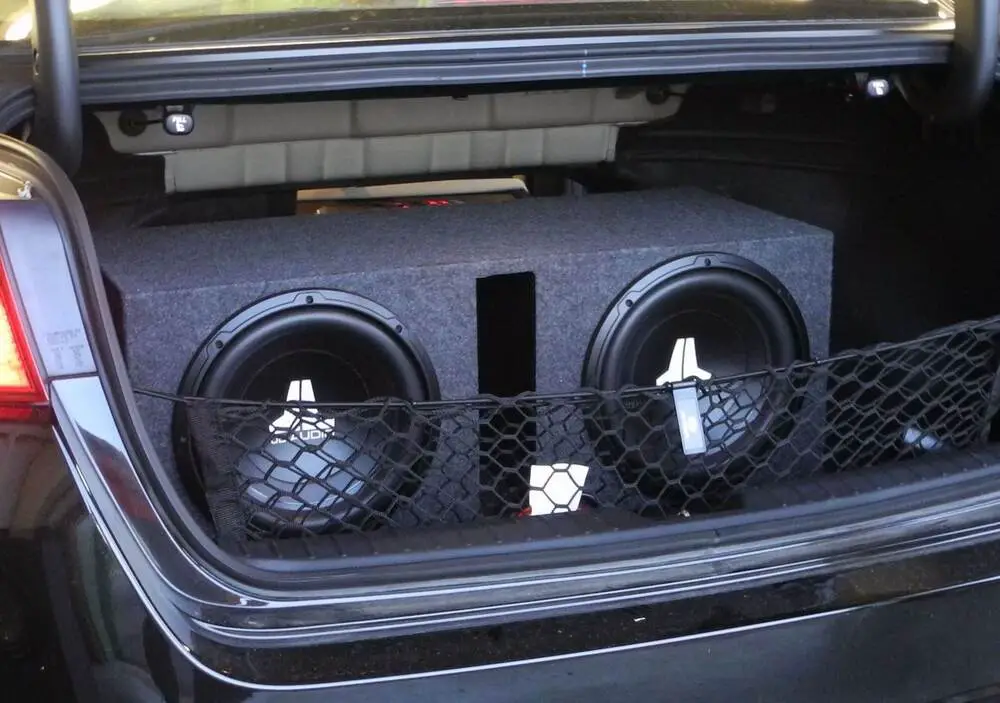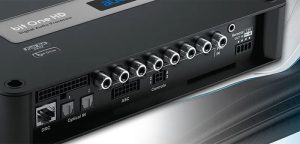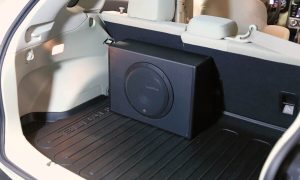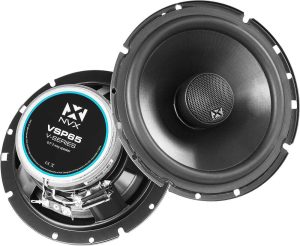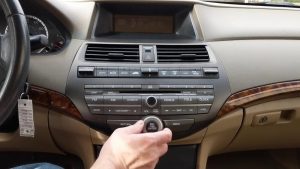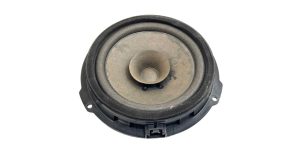When it comes to enhancing your car audio system, a subwoofer stands as one of the most impactful upgrades you can make. These specialized speakers bring those deep, rich bass notes to life, transforming your everyday driving experience into something truly immersive. But a common question many car audio enthusiasts face is whether a subwoofer needs a box or enclosure.
The short answer is yes – in most cases, you absolutely need a box for your car subwoofer. While there are some free-air or infinite baffle subwoofers designed to work without traditional enclosures, the vast majority of subwoofers require a properly designed box to perform at their best. Let’s dive into why these boxes are so important and how they affect your bass experience.
Contents
Why Subwoofer Boxes Matter
A subwoofer box serves several crucial functions beyond simply housing your speaker. Without one, most subwoofers simply cannot produce the bass quality or volume you’re looking for.
The box creates a controlled acoustic environment that allows the subwoofer to operate efficiently. When a subwoofer cone moves forward, it creates a positive pressure wave (compression) in front of it. When it moves backward, it creates a negative pressure wave (rarefaction) behind it. Without a box, these opposing sound waves would meet and cancel each other out, significantly reducing the bass output.
This acoustic phenomenon, known as phase cancellation, essentially means that without proper enclosure, much of your subwoofer’s power goes to waste. The box prevents these sound waves from interfering with each other, allowing for much stronger, cleaner bass reproduction.
Types of Subwoofer Boxes
Different subwoofer boxes serve different purposes and create different sound characteristics. Understanding these differences can help you choose the right enclosure for your preferences.
Sealed Boxes: These enclosures are completely airtight, creating a simple, controlled environment for the subwoofer. They typically produce tight, accurate bass that’s ideal for music genres where precision matters more than raw power. Jazz, classical, and acoustic music often benefit from sealed enclosures. These boxes tend to be smaller, making them a good choice when space is limited in your vehicle.
Ported Boxes: Also called vented enclosures, these boxes feature a carefully calculated port or vent that allows air to move in and out of the box. This design increases efficiency and typically produces louder bass, especially at certain frequencies. Ported boxes work well for hip-hop, electronic music, and other bass-heavy genres. They’re generally larger than sealed boxes and require more precise tuning.
Bandpass Boxes: These more complex enclosures use both sealed and ported chambers to create a highly efficient system within a specific frequency range. They can produce extremely loud bass within their target range but sacrifice some accuracy and versatility. Bandpass boxes are popular for competition sound systems where maximum volume is the goal.
Custom vs. Pre-Made Boxes
When setting up your car audio system, you’ll need to decide between a custom-built box or a pre-made option.
Custom boxes are designed specifically for your subwoofer model and vehicle space. They can be tailored to your exact specifications, optimizing both performance and fit. If you have limited space or unusual mounting requirements, a custom box might be your best option. Many audio enthusiasts build their own boxes, while others hire professionals to design and construct them.
Pre-made boxes offer convenience and predictable performance. Major audio manufacturers design these boxes to work well with a range of subwoofers, taking the guesswork out of the equation. They’re typically more affordable than custom options and can be installed immediately. For beginners or those seeking a straightforward solution, pre-made boxes are often ideal.
Box Construction Materials
The material used to build your subwoofer box significantly impacts sound quality, durability, and weight.
Medium-density fiberboard (MDF) stands as the most common material for subwoofer boxes, offering a good balance of density, rigidity, and cost-effectiveness. MDF doesn’t resonate as much as other materials, reducing unwanted vibrations that can color the sound. Standard MDF thickness ranges from 3/4″ to 1″, with thicker materials generally providing better performance.
Fiberglass allows for custom-shaped enclosures that can fit unusual spaces, making it popular for specialized installations. While more difficult to work with than MDF, fiberglass creates durable, lightweight enclosures that can withstand harsh conditions.
High-end installations sometimes use Baltic birch plywood, prized for its exceptional strength-to-weight ratio and attractive appearance. This premium material costs more but offers superior durability and resistance to warping.
Free Air Subwoofers: The Exception to the Rule
While most subwoofers require boxes, free-air (or infinite baffle) subwoofers represent an exception. These specialized speakers are designed to operate without a conventional enclosure, instead using the car’s trunk or rear deck as a baffle to separate the front and back sound waves.
Free-air subwoofers offer several advantages. They save significant space since they don’t require a bulky box. They also tend to produce clean, accurate bass that integrates well with the rest of your audio system. For audiophiles seeking natural sound reproduction rather than overwhelming volume, free-air subwoofers can be an excellent choice.
However, these subwoofers have limitations. They typically can’t produce the same volume levels as boxed subwoofers. They also require proper installation to prevent sound wave cancellation, which can be challenging in some vehicles. Free-air subwoofers work best in cars with well-sealed trunks that provide effective separation between the front and back sound waves.
Proper Subwoofer Box Sizing
The size of your subwoofer box dramatically affects performance. Using the wrong box volume can limit your subwoofer’s potential or even cause damage.
Each subwoofer has specific requirements for optimal performance. Manufacturers typically recommend an ideal box volume range, measured in cubic feet. This information usually appears in the subwoofer’s specifications or user manual. Following these recommendations ensures your subwoofer operates within its designed parameters.
Using a box that’s too small restricts cone movement and can cause overheating. The subwoofer works harder to move air in a confined space, potentially leading to damage over time. Undersized boxes typically produce tighter bass but with reduced volume and potential for distortion at higher power levels.
Conversely, boxes that are too large allow excessive cone movement, which can damage the subwoofer through over-excursion. Oversized boxes generally produce looser, less controlled bass that might sound “boomy” rather than precise.
Tuning Your Subwoofer Box
For ported and bandpass enclosures, tuning represents a critical aspect of performance. The tuning frequency determines where the box provides maximum output and affects how the bass sounds overall.
Lower tuning frequencies (typically 25-35 Hz) produce deeper bass that works well for genres like pipe organ music, soundtrack bass effects, and certain electronic music styles. Higher tuning frequencies (35-45 Hz) create more impactful mid-bass that complements rock, pop, and hip-hop.
Tuning involves calculating the proper port dimensions based on the box volume and desired tuning frequency. Incorrect tuning can result in uneven frequency response, distortion, or poor overall performance. Many subwoofer manufacturers provide recommendations or calculators to help determine the optimal tuning for their products.
Installation Considerations
Proper installation ensures your subwoofer box performs as intended while preventing damage to both the equipment and your vehicle.
Secure mounting prevents the box from sliding or tipping during driving, which could damage the subwoofer or create safety hazards. Most installations use brackets, straps, or bolts to anchor the box firmly to the vehicle. Remember that subwoofer boxes, especially larger ones, add significant weight to your vehicle, potentially affecting handling and fuel economy.
Adequate ventilation prevents overheating, particularly important for high-power systems. Ensure the subwoofer has sufficient airflow around it, especially if it’s in a confined space like under a seat. Some installations incorporate cooling fans for extreme setups.
Proper wiring supports optimal performance and prevents electrical issues. Use the correct gauge power and speaker wire for your system’s requirements, ensuring clean connections throughout. Inadequate wiring can limit power delivery, causing poor performance or potential system damage.
Conclusion
For most car audio enthusiasts, a subwoofer box isn’t just an option – it’s a necessity. The right enclosure transforms your subwoofer’s performance, delivering the rich, powerful bass that makes driving with music so enjoyable.
Whether you choose a sealed box for accurate bass response, a ported design for maximum volume, or explore free-air options for space savings, understanding how these choices affect your sound helps you create the perfect audio experience for your driving style. By selecting the right enclosure type, size, and construction, you’ll unlock your subwoofer’s full potential and enjoy music the way it was meant to be heard – with every beat, note, and nuance faithfully reproduced.
Remember that car audio is both science and art. While technical specifications matter, your personal preferences ultimately determine the right setup for your vehicle. Take time to research, listen to different systems, and even experiment with different enclosures to discover what sounds best to your ears.
